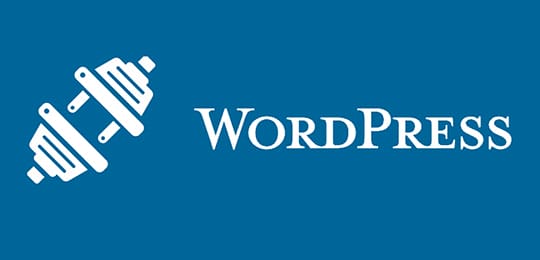WordPress can take some getting used to, especially your first time using the website building platform. There are a variety of ways you can destroy your site. A minor change that you may not know you did can have a massive impact.
Luckily, you can learn from WordPress blunders of the past and steer clear of the mistakes that have destroyed websites in the past. Let’s dive in!
1. Poor Site Security
 Your WordPress site is most likely going to be the main online hub for your business. This means that it should be secured from the get-go by using a username and password that is unique. This makes hacking your website more challenging.
Your WordPress site is most likely going to be the main online hub for your business. This means that it should be secured from the get-go by using a username and password that is unique. This makes hacking your website more challenging.
Even if you are selling handmade soap in a very niche market, protect your website with a strong username and password. Never use “admin” or your domain name as your username.
Also, create a unique password without your business name or your name in it. LastPass is a good online platform for securing your site.
2. Live Updates Crash Sites
 One minor coding slip up can bring a WordPress site to its knees. This makes live updates a dangerous affair. Now if you are simply changing the content or an image, it’s fine. But if you are adding a new feature via code, it’s best to have a failsafe.
One minor coding slip up can bring a WordPress site to its knees. This makes live updates a dangerous affair. Now if you are simply changing the content or an image, it’s fine. But if you are adding a new feature via code, it’s best to have a failsafe.
To ensure you don’t destroy your site, craft a development copy of your entire website. This copy allows you to test, add, and tweak as needed without putting your live site at risk.
You can also backup your site before implementing any changes. This is optimal for big changes, like a new payment system, a new group of pages, new member platform, and more.
Recommended for you: 31 Best & Most Downloaded WordPress Widgets (Sidebar Plugins).
3. Too Many Plugins and Bad Plugins
 Yes, plugins are excellent for improving your WordPress website’s functionality. But there is a fine line. Too many plugins or adding bad, incompatible plugins can destroy your site.
Yes, plugins are excellent for improving your WordPress website’s functionality. But there is a fine line. Too many plugins or adding bad, incompatible plugins can destroy your site.
There are plenty of business-boosting plugins, but not all are created equal. It is essential to analyze if the plugin is good, and good for your site. They should serve as a solution, not a hindrance.
For instance, the first thing you should check is that the plugin is compatible with your WordPress template. Next, look at when it was updated last. You want to use plugins that are regularly updated.
Also, check the reviews online to see if people find it useful. You can use WordPress plugin review platform to help in your research.

4. Never Updating Your WordPress Site
 Not updating your WordPress website or the plugins and other tools on your site is like never updating your smartphone operating system. Like your never updated mobile device, your site will slow down, get buggy, and it very well could destroy your site.
Not updating your WordPress website or the plugins and other tools on your site is like never updating your smartphone operating system. Like your never updated mobile device, your site will slow down, get buggy, and it very well could destroy your site.
The best way to ensure your site and its plugins are always updated is to set up automatic updates. For instance, using a website host that manages updates and site performance, like DreamPress.
You can also update your site and plugins manually. Simply schedule a day, once or twice a month, to go to your website to ensure everything is updated. It is a good idea to backup your site to ensure an update doesn’t destroy your website.
5. What is a Child Theme?
 If you are asking yourself the above question, you may be on the verge of destroying your WordPress website. A child theme lets you customize your site without losing all the changes when your parent theme is updated.
If you are asking yourself the above question, you may be on the verge of destroying your WordPress website. A child theme lets you customize your site without losing all the changes when your parent theme is updated.
This is absolutely vital because if you are making changes to your parent theme, you could destroy your site after the next update. Scary stuff, especially if you haven’t updated your website since the beginning. Your entire site could be reverted to the template default.
To keep your WordPress site up and running smoothly, create a child theme and use it when making changes to the code. You can use this step-by-step in creating a child theme to get started.
To get around this, you should create a child theme. Child themes use parent themes as starting points and then build on top of them. In other words, by using a child theme, you can update the parent theme AND keep your customizations.
You may also like: 5 Security WordPress Measures that’ll Make You Sleep Well.
Is Your WordPress Website Safe?

Being proactive and knowing what to change and how to change it can keep your WordPress site operating smoothly. If not, your user experience could be compromised, causing your site visitors to get frustrated.
Frustrated visitors inevitably will visit your competitors. This could have a big impact on your business profits. Take charge and don’t let the WordPress mistakes of the past haunt you. How are you protecting your website?





